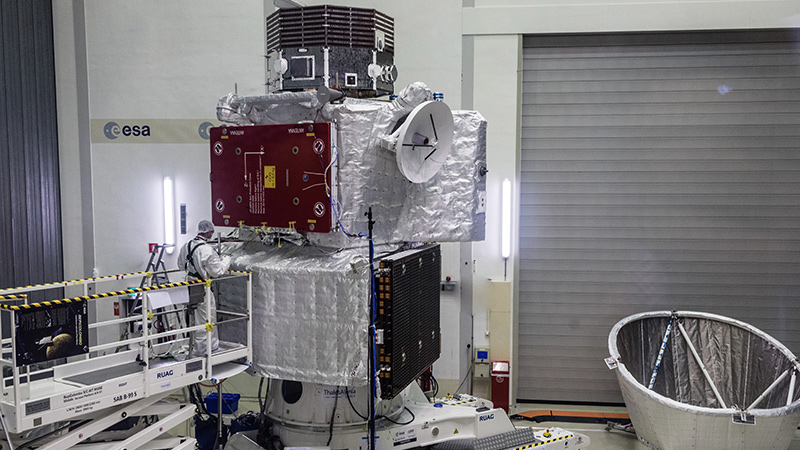Stay Up to Date
Submit your email address to receive the latest industry and Aerospace America news.
The Space Exploration Technical Committee brings together experts on topics relevant to future human and robotic exploration missions.
In January, NASA’s Discovery Program selected two asteroid missions to explore the early history of the solar system. Lucy, to launch in 2021, will pass six Trojan asteroids that lead and trail Jupiter. Trojan asteroids are thought to be remnants of the primordial material that formed the outer planets. Psyche, with a 2023 launch, will survey the asteroid 16 Psyche, believed to be the exposed metallic core of an incipient planet that lost its outer layers in violent collisions.
In March, NASA’s Origins, Spectral Interpretation, Resource Identification and Security — Regolith Explorer spacecraft, or OSIRIS-REx, collected imagery while scanning for Earth-Trojan asteroids during its passage through Earth’s L4 Lagrange point. In August, OSIRIS-REx adjusted course for a gravity-assisted slingshot pass around Earth on its asteroid-sample-return mission headed for Bennu.
In April, Cassini began its terminal mission phase called “Grand Finale,” a series of 22 weekly “dives” into Saturn’s atmosphere comprising orbital passes between the planet and its rings before its last plunge into Saturn on Sept. 15. Launched in 1997, Cassini had been in orbit around Saturn since 2004 to study the planet, its rings, moons and magnetosphere. It was the first such in-situ exploration of this region of Saturn.
Voyagers 1 and 2 celebrated their 40th launch anniversaries in August and September, respectively. They are traversing the heliosphere in opposite directions, telemetering to Earth information about their trajectory encounters. The spacecraft are expected to transmit until about 2030, when NASA plans to switch off their scientific instruments.
The European Space Agency’s Mercury mission spacecraft, BepiColombo, passed its final launch readiness tests in July in preparation for a 2018 launch. BepiColombo comprises two orbiters, Japan’s Magnetospheric Orbiter and ESA’s Planetary Orbiter, which will travel together in the Transport Module. The carrier will use a combination of electric propulsion and gravity-assisted passes at Earth, Venus and Mercury to complete the over seven-year transit to Mercury. At Mercury, the orbiters will transfer into distinct orbits, making complementary measurements of Mercury’s interior, surface, exosphere and magnetosphere to inform scientists about the origin and evolution of a planet close to its parent star.
In June, ESA’s Science Program selected the Laser Interferometer Space Antenna trio of satellites, intended to detect gravitational waves from space, as one of its large-class missions. Gravitational waves are ripples in space-time created by celestial objects with very strong gravity, e.g., merging black holes. Albert Einstein’s general theory of relativity predicted gravitational waves a century ago, but the ground-based Laser Interferometer Gravitational-Wave Observatory first detected them in 2015. The signal was triggered by two black holes colliding.
NASA unveiled a plan in March for a Deep Space Gateway to be launched into lunar orbit. The Orion crew vehicle will dock with this small habitat intended for long-duration, cislunar, crewed missions. The DSG will be used to test critical technologies needed for Mars missions, such as solar electric propulsion, life support systems or autonomous mission operations. Capabilities demonstrated by DSG will drive development of a Mars-ready Deep Space Transport. DST will comprise a larger, long-duration habitat with a 300 kilowatt-class solar electric propulsion system. DSG will be a staging point for assembly, outfitting and fueling of the DST, with initial flight tests scheduled to begin in 2029.
China hit major milestones in its attempt to assemble the China Space Station. In April, the Tianzhou-1 robotic cargo vehicle demonstrated China’s first in-space refueling when it met the Tiangong-2 orbital module, launched in September 2016. The Tianzhou-1 launched on the Long March 7, China’s supply craft launcher. A core space module is scheduled for launch in 2019 to commence on-orbit station assembly.
Related Posts
Stay Up to Date
Submit your email address to receive the latest industry and Aerospace America news.




